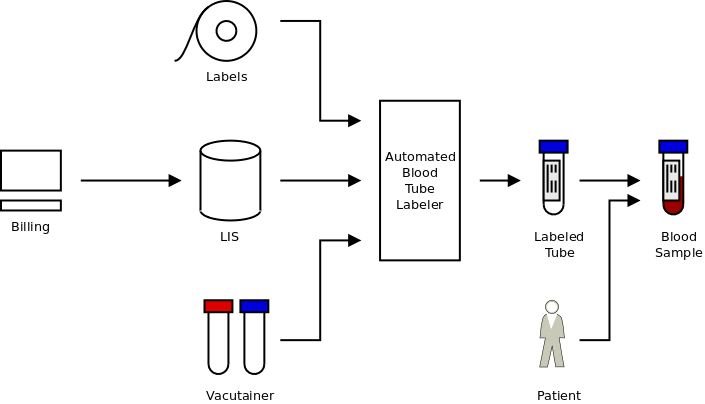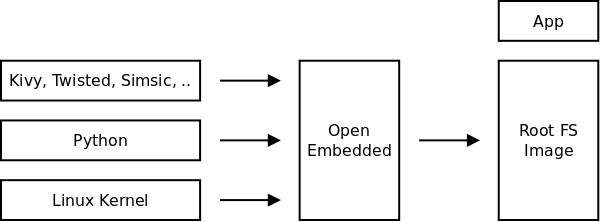Case Study: Automated Blood Tube Labeler
Human errors can be catastrophic in a diagnostics lab environment. One potential cause of human error, would be mis-labelling or improper labelling a blood sample collected from a patient. The Automated Blood Tube Labeler is a lab equipment designed to reduce the possibility of human errors, when collecting blood samples.
Background
Human errors can be catastrophic in a diagnostics lab environment. One potential cause of human error, would be mis-labelling or improper labelling a blood sample collected from a patient. The Automated Blood Tube Labeler is a lab equipment designed to reduce the possibility of human errors, when collecting blood samples.

The Automated Blood Tube Labeler can connect to the Laboratory Information System (LIS) and retreive patient details and the tests to be performed by scanning a patient’s barcode. It then requests the user to insert the correct hematology tube, by displaying the color code of the tube. Once the tube is inserted into the Automated Blood Tube Labeler, the Automated Blood Tube Labeler prints a tube label, with the patient details, and then pastes the label on the tube. While pasting the label the Automated Blood Tube Labeler ensures that the pasted label does not obstruct the sample measurement window, on the tube.
Problem
The customer had in-house capability for designing the hardware for the Automated Blood Tube Labeler. The software is complicated by the fact that it has to deal with multiple IO interfaces, all the while implementing the application logic.
-
LCD Display with Touch Screen
-
Network Interface for the LIS
-
Printer Interface
-
Serial Command Interface to Labelling Device
-
Door Sensors for Paper Roll Compartments
-
Paper Level Sensor
-
Buzzer
An embedded software application was required that accesses the various interfaces and provides a highly configurable, convenient and fluid interface to the user.
Solution
The hardware platform developed by the customer is based on the Toradex Colibri T20 module, powered by the Nvidia Tegra 2 SoC. The BSP is based on Angstrom distribution from the Open Embedded build system, provided by Toradex.
The software was built using Python, the Kivy UI framework, Twisted Networking framework, and Sismic statechart framework. The screens are defined in Kivy. And the statechart states, events and transitions are described using Sismic. There is a one-to-one correspondence between screens and states in the statechart.

This application design is based on event-state-action paradigm. When OK button is pressed on a screen, an event is sent to statechart interpreter. The statechart interpreter depending on the current state and event determines the transition to be taken, executes the corresponding action, and transitions to the next state. The actions triggered by the statechart could be blocking or non-blocking. If there are blocking actions then additional intermediate states are required to complete the action, before proceeding to the next screen.
Project Highlights
Porting Kivy to Angstrom Distribution
Angstrom distribution comes along with GTK+. GTK+ though a popular UI framework, was originally designed for touch screen based systems. Kivy is a modern UI framework designed primarily for touch screen based systems. We ported Kivy to the Angstrom distribution, developing recipes for Kivy and it’s dependencies.
Though this step turned out to be more work than anticipated, the end result was a better user interface experience for the product.
Statecharts Based Design
Statecharts have been around for more than an decade now, since their introduction in 1987, by David Harel. More recently statecharts representation and interpretation are being standardized, and libraries and frameworks provide a convenient way for using statecharts to implement applications. Sismic a statechart interpreter allows statecharts to represented using YAML, and uses an interpreteration that is close to SCXML. This framework was used, to contain the complexity of the application and serialize the control flow within the application.